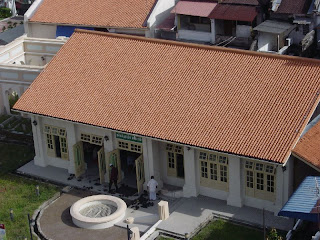Who were they?
What are the likely places to look for their names, photos and biographies?
What I did was I first emailed the VI Webmaster and then hosted a website with names I knew or roughly knew. That website was the USM Telehealth website which I helped to manage since 2002. Then I started to search in every possible way...for approximately 7 years!
Here is my list of 'likely places':-
[1] Parents
[2] Colleagues at USM
[3] VI Webmaster
[4] IMR, KL
[5] Office of Alumni Relations, NUS
[6] Newspapers & archives
[7] Malaysian TV channels
[8] USM Library
[9] KE VII Alumni
[10] MMA
[11] Elders in the community; anyone who lived between 1900 and 2007
[12] Muzium Kelantan
[13] Tabung Haji
[14] MoH
[15] Neighbours
[16] IPTAs & medical schools
[17] Perpustakaan Negara Malaysia
[18] Arkib Negara Malaysia
[19] DBP
[20] Books published by NUS, MBRAS, including coffee-table books
[21] Bookstores
[22] Relatives
[23] Friends
[24] Old scientific publications and archives
- My parents provided 5 names of people they knew
- Colleagues at tertiary centres provided 12 names
- Mr CM Chung (ex-VI & webmaster residing in Vancouver) provided the first 11 names of graduates of KE VII, Singapore
- IMR provided 2 names
- I was able to obtain 4 names at a gala dinner held by Office of the Alumni Relations, NUS at Marriott Putrajaya on 29 November 2003
- NUS published a book, To Sail Uncharted Seas in 2005, which had 48 names of the early Malay doctors
- Off and on, I found something in the newspapers or on TV and obtained 3 names. My daughter found a name
- Datuk Mohamed Anwar Fazal Mohamed suggested that I try Who's Who. USM Library assisted me with the Who's Who searches and I obtained 20 names
- Tabung Haji had the names but it could not furnish me the names of the doctors by pilgrimage year as its archived records was in Tanah Merah and that branch could not send the documents to Kota Bharu
- MoH provided 10 names of the first 10 Director-General of Health, Malaysia (after Merdeka)
- Datuk Yeoh Poh Hong (MMA) responded with a name that was not in the 2005 book published by NUS
- Asking neighbours and email correspondence returned 5 names
- Muzium Kelantan had provided photo albums and allowed me to use their images of the British doctors
- Haji Tamin Merican provided 4 names
- History books returned 3 names
- Dr Mohd Bakri Musa suggested 3 names
- Perpustakaan Negara Malaysia had no further information on the doctors
- Arkib Negara Malaysia had 2 names
- DBP staff provided a name
- MBRAS book had something on KL
- Archives in the UK returned 2 names
Using the 24 'likely places' listed above, I was able to come up with 60 names to work on.
With too many names to handle, I organised the names into 4 categories -
- Graduated from KE VII before WWII = 25
- Graduated from KE VII after WWII & before Merdeka = 23
- Non KE VII graduates = 7
- MOH DGs = 10
26 January 2010
































































